Salt Range Temples, Pakistan
Michael W. Meister, W. Norman
Brown Professor,
Department of the History of Art, University of Pennsylvania, and Consulting Curator,
Asian
Section, University of Pennsylvania Museum of Archaeology and
Anthropology, has served as Chair, Departments of
South Asia Studies and History of Art, and Director of
Penn's South Asia Center
Along the Indus River and in the Salt Range mountains, temples
dating
from the sixth to the early eleventh century survive in upper Pakistan. A
joint project with Professors Abdur Rehman, past Chairman of the
Department of
Archaeology, University of Peshawar, and Farid Khan, founder of the
Pakistan Heritage
Society, has begun to analyse and
document these important monuments in the history of South Asian temple
architecture. Two
seasons of excavation have been carried out at the site of North
Kafirkot.
 A preliminary
review and analysis of this tradition, "Temples Along the
Indus," was published in Expedition, the Magazine of the University of Pennsylvania Museum of Archaeology and Anthropology,
38.3 (1996): 41-54. To download a pdf, click here.
A preliminary
review and analysis of this tradition, "Temples Along the
Indus," was published in Expedition, the Magazine of the University of Pennsylvania Museum of Archaeology and Anthropology,
38.3 (1996): 41-54. To download a pdf, click here.
The text as well
as the preliminary typescript have been posted. Waisab and Seraiki have also provide links to this material.
 The Salt Range Temple Project excavated an important new temple designated
Temple E at north
Kafirkot in 1997. To download a report on both seasons of excavation published in Expedition 42.1 (2000): 37-46, click here.
The Salt Range Temple Project excavated an important new temple designated
Temple E at north
Kafirkot in 1997. To download a report on both seasons of excavation published in Expedition 42.1 (2000): 37-46, click here.
Views of Kafirkot following excavation are
available, as well as hypothetical
reconstructions of Temple E based on neighboring Temple A.
Support for the Salt Range Temple Project has been received from
the Middle East Center and
South Asia Regional Studies Department, University of Pennsylvania
Research Foundation, and the American Institute of Pakistan Studies.
For a full list of
project publications, see below.
Salt Range Workshops
Two International Workshops on the "Salt Range Culture Zone, Pakistan," with
sponsorship from the American Institute of Pakistan Studies and the
University of
Pennsylvania and University of Wisconsin, Madison, South Asia Centers, were held in 2004.
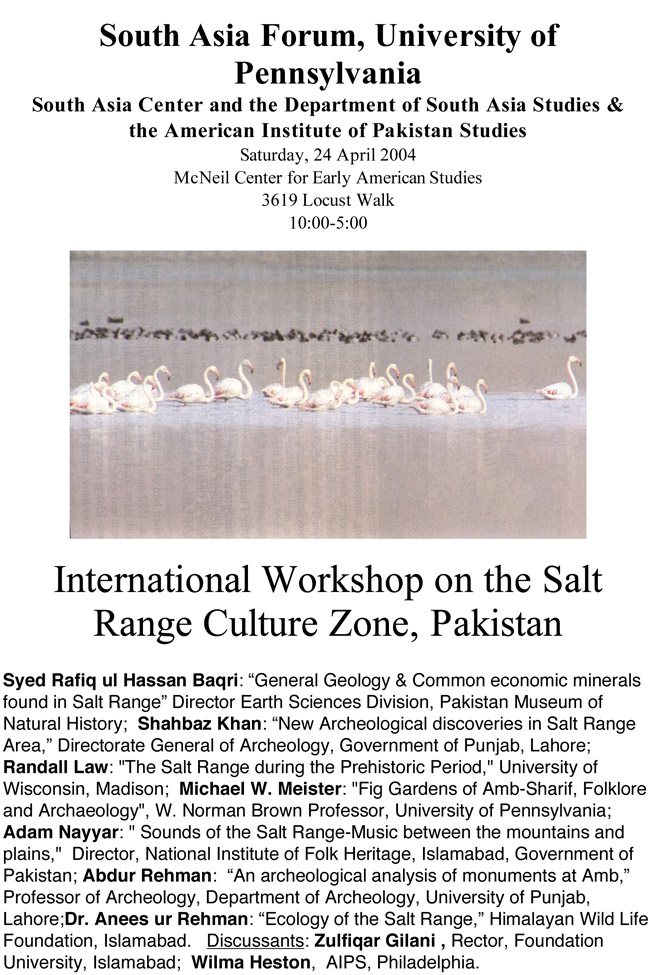
European Association of South Asian Archaeologists
An interim report on "The Salt Range and Indus Temple Project:
Uncovering Bilot" was presented at the 20th Conference of the European Association of South Asian Archaeologists at the University of Vienna, Austria, July 5-9, 2010.
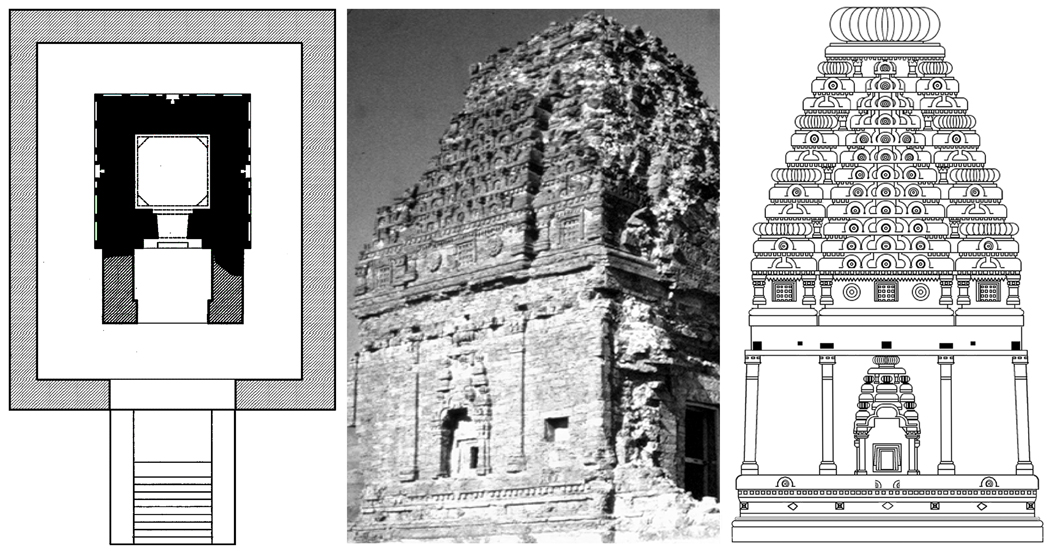
Cultural Heritage Issues in Pakistan: Archaeology, Museums and Conservation
Prof. Meister presented "Continuities of Architectural Heritage in the Northwestern Regions of Pakistan" at a symposium sponsored by the American Institute of Pakistan Studies, in collaboration with the Department of Archaeology and Museums, Ministry of Culture, Government of Pakistan, Islamabad, Jan. 6-8, 2011.
Amb
Further archaeological work and exploration begun at
the
Salt-Range site
of
Amb, in association with the Department of Archaeology and
Museums,
Government of the Punjab, have been suspended.
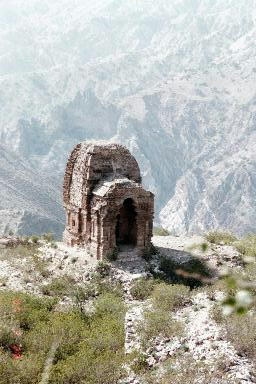
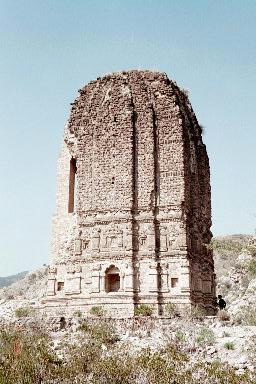
Amb, Temples A and B

Sites
- Taxila,
fifth-century encasement of Dharmarajika stupa
- Murti, stupa mound and Gupta-period temple-remains
- Katas,
pilgrimage site, tank, temples, and traces of Buddhist remains
- North Kafirkot, fortress, citadel,
and five temples;
destroyed temple at Kanjari-kothi; the newly discovered
Temple E is just south of Temple A.
- Bilot (South Kafirkot), fortress,
citadel, and remains of ca. eight temples
- Mari-Indus,
remains of three temples and habitation site
- Kalar,
brick temple
-
Amb, fort and two temples
- Malot,
temple and gateway
- Shivganga,
grove, tank, and temple ruins
- Nandana,
fort, temple, and platform
For more views of these monuments, see also Selected
Enlarged
Views of Salt Range Temples.
Monograph Published
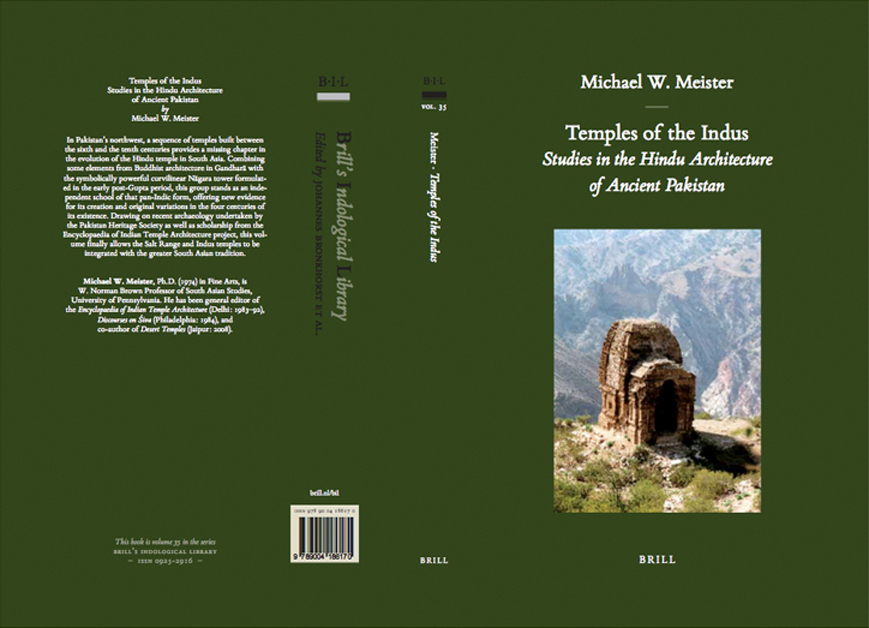
Michael W. Meister, Temples of the Indus: Essays in the Hindu Architecture of Ancient India (Brill Indological Library 35), Leiden & Boston: Brill, 2010.
For a full .pdf set of Plates download PORTFOLIO.
Other Salt Range Temple Project Publications
Abdur Rehman
- "The Discovery of Siva-Mahesvara Figure at Kafirkot." Lahore
Museum Bulletin 9/2 (1996) [1998]: 51-56.
Michael W. Meister and Abdur Rehman
- "Archaeology at Kafirkot." In Catherine Jarrige and
Vincent Lefevre, ed., South Asian Archaeology 2001, Paris:
Editions
Recherche sur les Civilisations, 2005, pp. 571-78.
Michael W. Meister, Abdur Rehman and Farid Khan
- "Discovery of a New Temple on the Indus." Expedition,
42.1 (2000): 37-46.
[.pdf available]
- "Temples of the Indus & the Salt Range, A Fresh Probe (1995-97)." The Pakistan Heritage Society Newsletter 1 (1998): 2-5.
Michael W. Meister
-
"Architectural Originality in the Punjab." Kala,
Journal of Indian
Art History Congress 6 (1999-2000): 27-35.
-
"Chronology of Temples in the Salt Range, Pakistan." In South Asian
Archaeology 1997, ed. Maurizio Taddei and Giuseppe De Marco. Rome:
Istituto Italiano per l'Africa e l'Oriente, 2000, pp. 1321-39.
-
"Crossing Lines, Architecture in Early Islamic South Asia," Res,
Anthropology and Aesthetics 43 (2003): 117-30.
- "Discoveries on the Indus." In The Ananda-Vana of Indian Art,
ed. Naval Krishna and Manu Krishna, pp. 95-102. New Delhi: Indica, 2004.
- "Exploring Kafirkot: When is a Rose Apple Not a Rose?" Pakistan Heritage 1 (2009): 109–28.
-
"Gandhara-Nagara Temples of the Salt Range and the Indus."
Kala,
the Journal of Indian Art History Congress 4 (1997-98): 45-52.
- "Gumbat, Talash Valley, Dir: An Indus Temple in Greater Gandhara." Gandharan Studies 4 (2010):: 245-54..
-
"Malot and the Originality of the Punjab." Punjab Journal of
Archaeology and History 1 (1997): 31-36.
- "Multiplicity on the Frontier: Imagining the Warrior Goddess." Pakistan Heritage 2 (2011): 87-98.
-
"Pattan Munara: Minar or Mandir?" In Hari Smiriti: Studies in Art,
Archaeology and Indology, Papers Presented in Memory of Dr. H.
Sarkar,
New Delhi: Kaveri Books, 2006.
- "The Problem of Platform Extensions at Kafirkot North." Ancient Pakistan 16 (2005): 41-48.
- "Temple Restoration and Transformation." In South Asian
Archaeology 1999, ed. E. M. Raven, pp. 415-426. Groningen: Egbert Forsten, 2008.
-
"Temples Along the Indus." Expedition, the
Magazine
of the University of Pennsylvania Museum of Archaeology and Anthropology
38.3 (1996):
41-54.
[.pdf
available]
-
"Temples of the Salt Range." In Religion, Ritual & Royalty,
ed.
N.
K. Singhi and Rajendra Joshi, pp. 132-39. Jaipur: Rawat Publications,
1999.
In Press
- "'Indo-Aryan' Temples: Noodling Seventh-Century Nagara." Journal of the Indian Society of Oriental Art.
- "Indus Temples and Saurashtra." Ancient Pakistan 18.
- "Northwest India and the Punjab." In M. A. Dhaky , ed., Art and
Architecture in India: North Indian Art and Architecture
(Pre-Medieval).
-
"Restoring Temples in the Kafirkots, N.W.F.P., and Katas, Panjab,
to Discussions of the Origins of Nagara." In M. S. Nagaraja Rao, ed.
K. V. Ramesh Felicitation Volume.
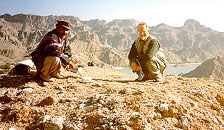
Farzand Masih
Then a student of Professor Abdhur Rehman's at the University of
Peshawar and
team representative from the Department of Archaeology and Museums,
Government of
Pakistan, Farzand Masih travelled and worked with the Salt Range Temple
Project for
several
seasons while he prepared his doctoral dissertation, "Temples of the
Salt Range and North and South Kafirkot: Detailed Analysis of Their
Architecture and Decorative Designs" (Department of Archaeology,
University of Peshawar, 2000). Dr. Masih is curently Professor and Chair,
Department of Archaeology, University of the Punjab, Lahore. His publications on Salt Range temples include
(with Shahbaz Khan) "Kallar - a Brick Temple." Journal of the Punjab
University Historical Society, XXV (2000): 105-09.
"Temples of the Salt Range and Kafir Kot: Ornamentation." Lahore Museum
Bulletin XIII.2 (2000): 33-36.
"An Extant Hindu Sahi Temple at Nandana." In Sohdra, History &
Archaeology, by Abudl Aziz Farooq. Majlis-i-Sqafat Sohdra
(Gujranwala), pp. 81-94.
"Temples of North Kafir Kot." Indo Koko Kenkyu 22 (2001):
101-22.
"A Seventh Century Temple at North Kafir Kot." Lahore Museum
Bulletin XIV.1 (2001): 1-8.
"Style of the Salt Range and Kafir Kot Temples in Pakistan: A Critical
Analysis." Pakistan Vision III.1-2 (2002): 105-40.
"Temple Traditions in the Salt Range During the Visit of Chinese Traveler Yuan-Chwang (629-645 A.D.). Journal of Asian Civilizations (Formerly Journal of Central Asia)XXVIII, No. 1 (2005): 39-53.
last
modified 21 June 2011
Michael W. Meister, mwmeister@yahoo.com; mmeister@sas.upenn.edu
 A preliminary
review and analysis of this tradition, "Temples Along the
Indus," was published in Expedition, the Magazine of the University of Pennsylvania Museum of Archaeology and Anthropology,
38.3 (1996): 41-54. To download a pdf, click here.
A preliminary
review and analysis of this tradition, "Temples Along the
Indus," was published in Expedition, the Magazine of the University of Pennsylvania Museum of Archaeology and Anthropology,
38.3 (1996): 41-54. To download a pdf, click here.
 A preliminary
review and analysis of this tradition, "Temples Along the
Indus," was published in Expedition, the Magazine of the University of Pennsylvania Museum of Archaeology and Anthropology,
38.3 (1996): 41-54. To download a pdf, click here.
A preliminary
review and analysis of this tradition, "Temples Along the
Indus," was published in Expedition, the Magazine of the University of Pennsylvania Museum of Archaeology and Anthropology,
38.3 (1996): 41-54. To download a pdf, click here.
 The Salt Range Temple Project excavated an important new temple designated
Temple E at north
Kafirkot in 1997. To download a report on both seasons of excavation published in Expedition 42.1 (2000): 37-46, click here.
The Salt Range Temple Project excavated an important new temple designated
Temple E at north
Kafirkot in 1997. To download a report on both seasons of excavation published in Expedition 42.1 (2000): 37-46, click here.




